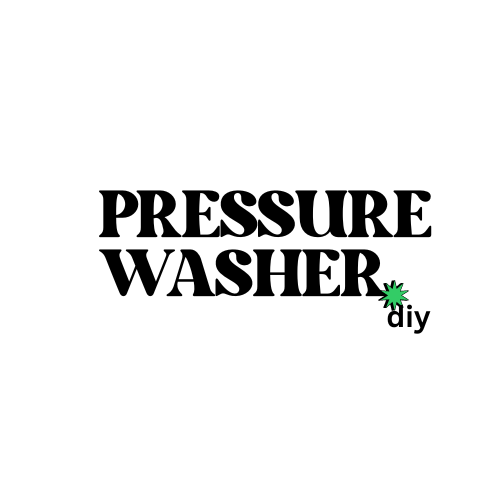Pressure washing is a highly effective method for cleaning concrete surfaces, but the job doesn’t end there. Proper post-treatment is crucial to maintain the cleanliness and appearance of the concrete, ensuring it remains in top condition for years to come. This comprehensive guide delves into the technical details and best practices for pressure wash post-treatment, providing you with a reliable playbook for DIY concrete cleaning and maintenance.
Recommended Mix Ratio for Post-Treating Concrete with Bleach
When it comes to post-treating concrete with bleach, the recommended mix ratio is typically between 2% and 4% sodium hypochlorite (SH) solution. This concentration has proven to be highly effective in removing organic growth, such as mold, mildew, and algae, while also brightening the concrete surface.
To prepare the post-treatment solution, you’ll need to mix the sodium hypochlorite (SH) with water in the appropriate ratio. For example, a 2% SH solution would require 2 parts SH to 98 parts water, while a 4% SH solution would be 4 parts SH to 96 parts water. It’s important to measure the ingredients precisely to ensure the desired concentration is achieved.
Applying the Post-Treatment Solution

The post-treatment solution should be applied to the concrete surface using a backpack sprayer or a surface cleaner attachment for your pressure washer. This ensures even and thorough coverage, allowing the solution to penetrate and effectively treat the entire area.
When applying the solution, it’s crucial to pay attention to the coverage rate. As a general guideline, you should aim for a coverage rate of approximately 500-600 square feet per gallon of the post-treatment mix. This will help ensure that the solution is applied at the right concentration and that no areas are left untreated.
Drying Time and Rinsing
Unlike the initial pressure washing step, it is generally recommended not to rinse the post-treatment mix off the concrete surface. Instead, allow the solution to dry naturally on the surface. This ensures that the solution has sufficient time to effectively kill any remaining bacteria and organic growth, as well as to fully penetrate and brighten the concrete.
The drying time can vary depending on factors such as temperature, humidity, and the porosity of the concrete. As a general rule, you should allow the post-treatment solution to dry for at least 30 minutes to an hour before considering the job complete.
Using Oxalic Acid for Post-Treating Concrete
In addition to sodium hypochlorite (SH), oxalic acid can also be used for post-treating concrete to brighten the surface. Oxalic acid is particularly effective in removing rust and other mineral deposits, making it a valuable tool for restoring the appearance of weathered or discolored concrete.
It’s important to note that oxalic acid should never be mixed with sodium hypochlorite (SH). The two chemicals can react and produce toxic fumes, so it’s crucial to use them separately and in accordance with the manufacturer’s instructions.
When using oxalic acid for post-treatment, the recommended concentration is typically between 5% and 10% solution. As with the SH solution, the oxalic acid should be applied using a backpack sprayer or surface cleaner, and the concrete should be allowed to dry completely before rinsing or sealing.
Technical Specifications
To summarize the key technical specifications for pressure wash post-treatment:
| Specification | Details |
|---|---|
| Sodium Hypochlorite (SH) Solution | 2% to 4% solution for post-treating concrete to remove organic growth and brighten the surface |
| Oxalic Acid | Used for brightening concrete surfaces, particularly effective in removing rust and mineral deposits. Should not be mixed with SH. Recommended concentration is 5% to 10% solution. |
| Application Method | Apply the post-treatment solution using a backpack sprayer or a surface cleaner attachment for your pressure washer. |
| Coverage Rate | Aim for a coverage rate of approximately 500-600 square feet per gallon of the post-treatment mix. |
| Drying Time | Allow the post-treatment solution to dry on the surface for at least 30 minutes to an hour. Do not rinse. |
Additional Tips and Precautions
When working with post-treatment solutions, it’s essential to take the necessary precautions to protect yourself and the surrounding environment:
- Wear Protective Gear: Always wear gloves, goggles, and other appropriate personal protective equipment (PPE) when handling and applying the post-treatment solutions.
- Protect Vegetation and Surfaces: Take care to avoid overspray or runoff that could potentially damage nearby plants, landscaping, or other surfaces.
- Ensure a Clean Surface: Before applying the post-treatment solution, make sure the concrete surface is free of debris, loose material, and any remaining dirt or grime from the initial pressure washing.
- Follow Manufacturer Instructions: Carefully read and follow the instructions provided by the manufacturer of the post-treatment chemicals, as the specific mixing ratios and application methods may vary.
- Dispose of Waste Properly: Properly dispose of any leftover post-treatment solution and rinse water in accordance with local environmental regulations.
By following these best practices and technical guidelines, you can ensure that your pressure washing project achieves the desired results and that the concrete surface remains clean, bright, and well-maintained for years to come.
References
- Pressure Washing Resource. (2018). Post Treating Concrete – Flat Work. Retrieved from https://pressurewashingresource.com/community/t/post-treating-concrete/14555
- Klein Pressure Washing. (n.d.). RESIDENTIAL FAQs. Retrieved from https://kleinpressurewashing.com/faq/
- YouTube. (2023). Pressure Washing 101: Post treating concrete after surface cleaning. Retrieved from https://www.youtube.com/watch?v=KlgjPtOSUYU
- Reddit. (2020). What’s a good post treatment chemicals for driveways? Retrieved from https://www.reddit.com/r/pressurewashing/comments/kk0fnl/whats_a_good_post_treatment_chemicals_for/
- First Choice Exterior Cleaning. (2020). Pre-Treating Concrete Before Cleaning Your Driveway. Retrieved from https://www.firstchoiceexteriorcleaning.com/2020/04/17/how-pre-post-treating-helps-with-driveway-cleaning/
